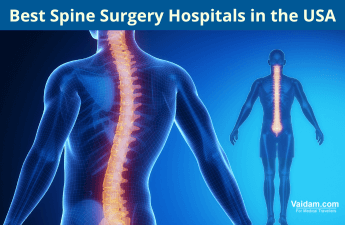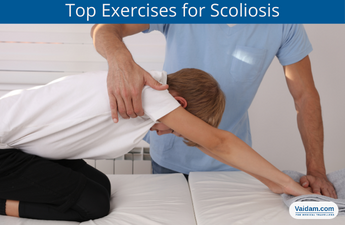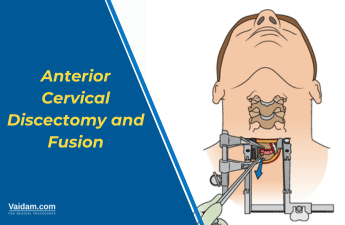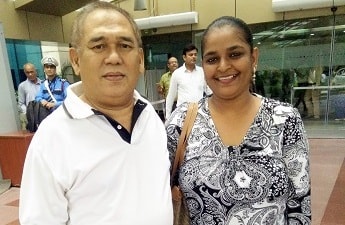What is Spinal Decompression
Spinal decompression is a general term used to describe various surgical procedures that are performed to relieve pain caused by compressed or pinched spinal nerves (neural impingement). Bulging or collapsed disks, thickened joints, loosened ligaments and bony growths can narrow the spinal canal and the spinal nerve openings (foramen), causing irritation. Compression on the spinal nerve roots leads to leg pain.
FORM_CODE
Spinal decompression surgery is frequently used to treat the following conditions:
pinal stenosis – narrowing of a section of the spinal column, which puts pressure on the nerves inside
Slipped disc and sciatica – where a damaged spinal disc presses down on an underlying nerve
Spinal injuries – such as a fracture or the swelling of tissue
Metastatic spinal cord compression – where cancer in one part of the body, such as the lungs, spreads into the spine and presses on the spinal cord or nerves
Overview of Spine 
Spine is buildup of 33 small bones called vertebrae, which are arranged one above the other, having a soft intervertebral disc between each pair of the vertebrae. Intervertebral disc contains a soft jelly-like substance called, nucleus pulposus present in the center, and is surrounded by multiple layers of collagen called the annulus fibrosis (like an onion). This disc attaches and helps in the movement between vertebrae and also acts as a shock absorber of the spine. Hence, the vertebrae acts as a protective shield for the spinal cord & nerve roots.
Who Needs a Spinal Decompression Surgery?
Spinal decompression surgery is recommended in patients suffering from of spinal stenosis. Spinal stenosis is a condition in which there is narrowing of the spinal canal which can causes chronic pain, numbness, and muscle weakness in the arms or legs. This condition mainly affects the elderly people and is mostly caused by degenerative changes that result in enlargement of the facet joints and thickening of the ligaments.
Spinal decompression surgery is recommended for a person who is suffering from:
Pain, weakness, numbness, or needles in the leg or foot
Leg pain that is worse than back pain
Not responding to any kind of physical therapy or medication
Causes a difficulty in walking or standing that can affect the quality of life
In rare cases, pressure on the bladder can lead to paralysis or complications with bladder or bowel function.
Know More:
Spinal Decompression Procedure
There are several type of surgical techniques which are commonly used to provide relief from nerve decompression:
Microdiscectomy (Microdecompression): This is mostly performed for leg pain caused by lumbar herniated disc, known as Sciatica. The procedure involves removal of a part of the disc that is compressing the nerve & is done by using microsurgical techniques.
Lumbar Laminectomy (open decompression): This is mostly performed for leg pain caused by lumbar spinal stenosis: This procedure involves complete removal of the bony roof (lamina) & thickened ligaments present over the spinal canal to decompress both sides (left and right) of the spinal canal.
Laminotomy: This process involves decompression of one side of the spinal canal (left or right) by removing a small portion of the laminar roof & ligaments present above the spinal canal, leaving the majority of the lamina intact. With the help of this method, the natural support of the lamina is not disturbed, which in turn decreases the chances of postoperative spinal instability. Occasionally an endoscope may be used, which will allow for a smaller, less invasive incision.
All these procedures can be performed as an independent surgery or may be done in combination, depending on the severity & requirement of the case.
Before the procedure
Surgical tests (e.g., blood test, electrocardiogram, chest X-ray) are performed prior to the surgery.
Patient’s medical history (allergies, medicines/vitamins, bleeding history, anesthesia reactions, and previous surgeries) is taken.
Patient is advised to stop taking all non-steroidal anti-inflammatory medicines (Naprosyn, Advil, Motrin, Nuprin, Aleve, etc.) and blood thinners (Coumadin, aspirin, etc.) one week prior to the surgery.
Patient is also advised to stop smoking, chewing tobacco, and drinking alcohol one week prior and 2 weeks after the surgery, as these can cause bleeding problems.
Patient is hospitalized on the same day of the procedure. And is advised not to have any food or drink past midnight the night before surgery. An intravenous (IV) line is placed in the arm.
During the procedure
Surgery is performed under general anesthesia & the entire procedure may take approximate 1-3 hour, depending on the complexity.
Patient is prepared for the surgery
Incision: is made down the middle of the back over the appropriate vertebra .Back muscles are split down the middle and then moved to either side, to expose the lamina of each vertebra.
Laminectomy or Laminotomy: An X- ray is taken of the exposed bone, to confirm the correct vertebrae & accordingly the preferred procedure is performed.
Decompress the spinal nerve: Facet joints, which is present directly over the nerve roots, may be undercut (trimmed) to provide more room for the nerve roots (procedure is called foraminotomy) .This will enlarge the neural foramen (where the spinal nerves exit the spinal canal). If compression is caused by a herniated disc then discectomy is performed.
Closure: Muscle and skin incisions are stitched together with sutures or staples. Dissolvable sutures are mostly used.
After the procedure
Patient will be hospitalized for four or five days, depending upon the procedure. Patient will be kept on pain killers to provide relief from the post-operative pain. After the surgery patient will be allowed to take sips of fluids and then gradually progress to a full diet. Patient can shower 4-5 days after the procedure.
Patient may require help with daily activities (e.g., dressing, bathing) initially (for the first few weeks). Fatigue is common after the procedure .One can slowly return back to their normal activities.
Post –hospital care
After the `surgery, patient should follow the following restrictions:
Patient is advised not to drive for 2 to 4 weeks after surgery or till he is permitted by the doctor
Should avoid sitting for longer duration.
Should not lift anything heavy& should not bend or twist at the waist.
After the first –follow up visit, patient will be allowed to do any housework and yard –work. This includes gardening, moping vacuuming, ironing, and loading/unloading the dishwasher, washing clothes or drying etc.
Patient is advised to avoid smoking. As smoking delays healing by increasing the risk of complications (e.g., infection) and inhibits the bone fusion.
Patient is advised to walk. Initially, one should start with a short distance and slowly increase the distance.
Spinal Decompression Risks
Following are the risk associated with the spinal decompression surgery:
Infection
Bleeding
Nerve or tissue damage or persistent pain
Paralysis
Allergic reaction to anesthesia
Damage to the surrounding soft tissue
Deep Vein Thrombosis (DVT)
Vertebrae failing to fuse
Bone graft migration: Immediately after the surgery the bone graft can move from the correct position in between the vertebrae.
Leakage of cerebrospinal fluid(CSF)
FAQ’s
Will a person require blood transfusion during the surgery?
Some blood loss occurs during surgery, but mostly a blood transfusion is not required. More extensive surgeries may sometimes require a blood transfusion.
For how long a person is advised to stay in the hospital?
Duration of stay in the hospital can be from an overnight stay to a week. This will depend on the procedure & severity of the case.
When can a person start walking after the procedure?
Patient is encouraged to start walking the very next day after the surgery.
Does a patient requires physiotherapy sessions after the surgery?
After the surgery, patient is advised to go for physiotherapy sessions as this will help them to maintain a good posture and will also teach them the right way of moving the spine.
Is there any certain position in which a patient should sleep in at night?
There is no recommended position in which a person should sleep. Few people find it comfortable to sleep with a pillow in between their legs or under their thighs. The most important thing is that patient should be comfortable while sleeping.
When can a person go back to work?
Going back to work will depend on the occupation one is with. If a person is in an occupation where physical work is required then they should wait for up to 3-6 months. With a sedate occupation one can get back to work with as soon as 3 weeks.
What is the success rate?
Success rate for decompression spine surgery is high, with approximately 90% of patients getting relief from the leg pain after the surgery.
Facts about back pain
It can gradually get worse and more disabling, depending on the cause.
Back pain can reduce work efficiency more than any other medical condition. It is the second most common cause of missed workdays (behind the common cold).
It is more common in men. Average age for surgery is 40-45 years.
The most common cause of acute back pain is muscle strain.
Common cause of chronic back pain is degeneration of the lumbar spine and lumbar disk disease.
Lower back is the most common site of pain.
Majority of the people suffering from back pain have a herniated disk with nerve pain transmitted down a lower extremity. This pain is called sciatica.
Herniated disk can cause varying degrees of pain. Serious problem that arises is cauda equina syndrome, compression at the point where roots of all the spinal nerves are located.
References
- http://www.spine-health.com/treatment/back-surgery/laminectomy-and-spinal-stenosis-success-rates
- http://www.back.com/spine-back-surgery/back-surgery-options/decompression-pinched-nerve
- http://www.spineservice.com.au/faq.html
- http://www.nhs.uk/Conditions/Lumbardecompressivesurgery/Pages/Whatisitpage.aspx










 Vaidam is NABH certified healthcare discovery platform that will connect you to top-notch medical experts, hospitals, wellness options, and trusted travel partners to help identify and make the right healthcare choices.
Vaidam is NABH certified healthcare discovery platform that will connect you to top-notch medical experts, hospitals, wellness options, and trusted travel partners to help identify and make the right healthcare choices. You can search for the best hospitals in India to treat cancer and ailments of the heart, bones or kidney, read about them, view photographs of the facilities at the hospitals and the places at which the hospitals are located, and check the cost of treatment.
You can search for the best hospitals in India to treat cancer and ailments of the heart, bones or kidney, read about them, view photographs of the facilities at the hospitals and the places at which the hospitals are located, and check the cost of treatment. As soon as you post an enquiry, the patient relation team will collect details from you, share them with the doctors and hospitals on Vaidam's panel, and get a personalized treatment plan. We research to get quality treatment within your budget.
As soon as you post an enquiry, the patient relation team will collect details from you, share them with the doctors and hospitals on Vaidam's panel, and get a personalized treatment plan. We research to get quality treatment within your budget. Vaidam concierge assists patients, to get medical Visa to travel to India, the best airline fares and arrangements for your stay. Our concierge also helps you with daily travel, language, and food concerns. Vaidam does everything to be your perfect host. All of Vaidam’s services are free of cost to patients.
Vaidam concierge assists patients, to get medical Visa to travel to India, the best airline fares and arrangements for your stay. Our concierge also helps you with daily travel, language, and food concerns. Vaidam does everything to be your perfect host. All of Vaidam’s services are free of cost to patients. If you are looking for medical care in India (New Delhi, Mumbai, Chennai, Hyderabad or Ahmedabad) or in Turkey (Istanbul,Ankara or Antalya), Vaidam Health has a network in each of those cities.
If you are looking for medical care in India (New Delhi, Mumbai, Chennai, Hyderabad or Ahmedabad) or in Turkey (Istanbul,Ankara or Antalya), Vaidam Health has a network in each of those cities.
